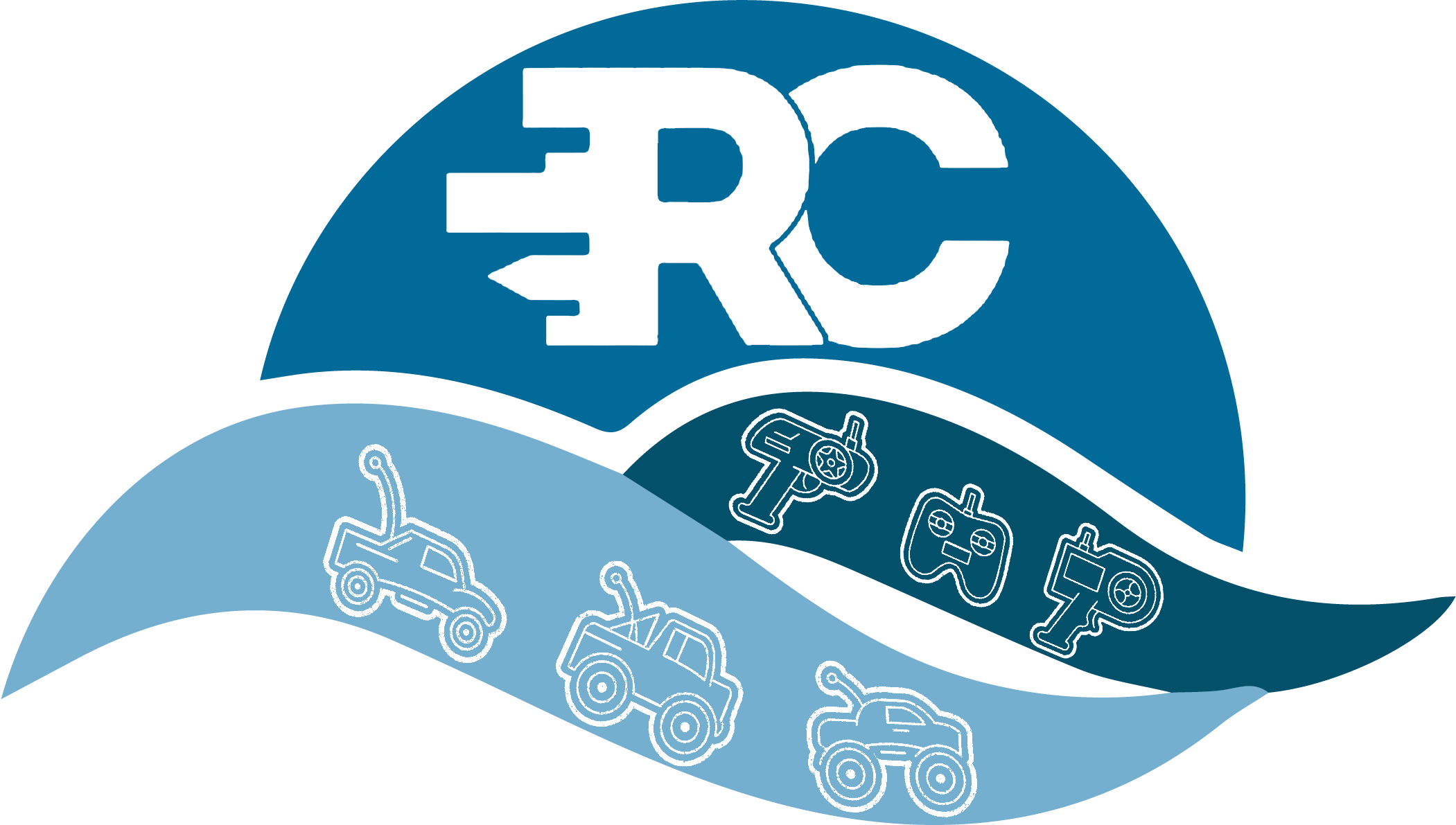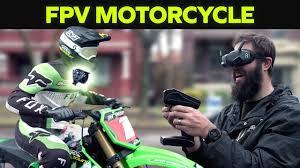Hello everyone! Hope you all are doing well. Today I am gonna talk about RC motorcycles. If you are here, then that means that you all have taken some kind of interest in RC motorcycles and yes RC motorcycles are really something to be interested in. In this article, I’ll give you a brief detail about RC motorcycles and you will get all the information you are looking for. So, without any further ado, Let’s get started.
Table of Contents
Introduction
Radio-controlled (RC) motorcycles bring the thrill of motorcycling into the palm of your hand, allowing enthusiasts of all ages to experience the excitement of high-speed racing and stunt riding on a smaller scale. Unlike RC cars, RC motorcycles require a unique skill set and a focus on balance, making them a fun challenge for beginners and experts alike. In recent years, technological advancements have made RC motorcycles more accessible, with options for all skill levels and terrains.

This guide provides everything a beginner needs to know to start with RC motorcycles, from understanding the different types and choosing a model to learning the basics of operation, safety tips, and maintenance practices.
What Are RC Motorcycles?
RC motorcycles are scaled-down, remote-controlled models designed to replicate the appearance, movements, and handling of real motorcycles. Unlike RC cars, these motorcycles balance on two wheels, which requires unique engineering solutions to prevent them from toppling over. The technology used in RC motorcycles has evolved significantly, with models now featuring gyros, stabilizers, and advanced suspensions for smoother handling.
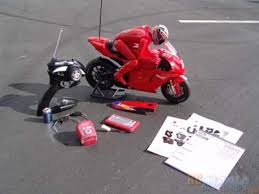
RC motorcycles are popular in both casual and competitive settings. Hobbyists enjoy taking their bikes on-road or off-road, performing stunts, and racing, while competitive riders participate in events to showcase their skills and customizations. For beginners, RC motorcycles offer a rewarding challenge that combines technical knowledge with hands-on practice.
Types of RC Motorcycles
Choosing the right type of RC motorcycle is a critical first step. Here are the main categories:
1. Electric vs. Nitro RC Motorcycles
- Electric RC Motorcycles: These are powered by rechargeable batteries and are popular with beginners due to their simplicity, low maintenance, and quiet operation. They come with either brushed or brushless motors, with brushless motors offering more speed and efficiency but often costing more. Popular models include the Kyosho Mini-Z Moto Racer, which is known for its smooth handling and beginner-friendly controls.
- Nitro RC Motorcycles: These are fuel-powered and provide a more realistic motorcycle experience, complete with the sounds and higher speeds typical of a gas-powered vehicle. However, nitro models require more upkeep and a learning curve to handle. A recommended model for advanced beginners is the Venom VMX 450, which combines durability with high performance.
2. On-Road vs. Off-Road RC Motorcycles
- On-Road RC Motorcycles: Optimized for flat, paved surfaces, these motorcycles are built for speed and feature slick tires that provide grip on smooth terrain. They are ideal for indoor tracks or paved outdoor surfaces. The Ducati Desmosedici RC is a popular on-road model known for its design and impressive on-road performance.

- Off-Road RC Motorcycles: Built to handle rough and uneven terrain, off-road RC motorcycles feature rugged frames, suspension systems, and knobby tires for maximum traction on dirt, grass, or gravel. A recommended off-road model for beginners is the Anderson M5 Cross, which offers excellent durability and stability on various surfaces.
Essential Components of an RC Motorcycle
To get the best experience, it’s essential to understand the core components of an RC motorcycle:
- Transmitter and Receiver: The transmitter is the remote controller, while the receiver in the motorcycle translates your commands to control speed, direction, and brakes. The Flysky FS-GT5 is a popular, budget-friendly transmitter with easy-to-use controls.
- Motor: The motor drives the motorcycle, with electric models having brushed or brushless motors and nitro models using fuel-driven engines. Brushless motors are powerful and longer-lasting, making them a top choice for advanced users.
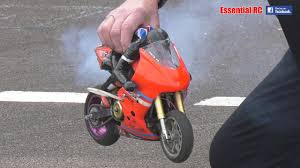
- Battery and Charger: Electric motorcycles use either NiMH or LiPo batteries. LiPo batteries offer higher energy density and longer runtime but require careful handling. Chargers like the SkyRC iMAX B6AC V2 work well for beginners and offer built-in safety features.
- Chassis and Tires: The chassis provides structural stability, while tires are optimized based on the intended terrain. Off-road tires are thick and rugged, while on-road tires are sleek for speed and precision.
- Gyro Stabilizer: Many RC motorcycles have built-in gyros that help keep them balanced, especially when turning. Gyros are beneficial for beginners, as they prevent the bike from tipping over too easily.
Choosing the Right RC Motorcycle for Beginners
When selecting your first RC motorcycle, consider your budget, skill level, and preferred riding environment. Here’s a breakdown to help you decide:
- Budget: RC motorcycles range widely in price. For beginners, a budget of $100 to $300 should offer good options without overwhelming complexity. The Kyosho Mini-Z Moto Racer is a budget-friendly model with solid performance. The link to buy and some other details will be given below.
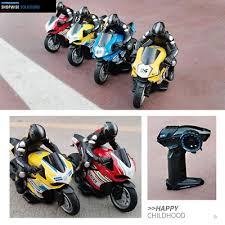
- Skill Level: Beginners may want to start with an electric on-road motorcycle, as they are easier to control and maintain. The Ducati Desmosedici RC is user-friendly and comes with gyro stabilization, making it easier to learn the basics. The link to buy and some other details will be given below.
- Intended Use: Consider the surface where you’ll primarily be riding. For smooth pavement, go for an on-road model. If you’re riding on dirt or rough terrain, an off-road model like the Anderson M5 Cross is a better fit. The link to buy and some other details will be given below.
Top Recommended Models for Beginners:
1. Kyosho Honda NSR500

The Kyosho Honda NSR500 is a beginner-friendly model with a stylish design, mimicking the look of a real Honda NSR500. It features a powerful electric motor and a built-in gyroscope for better stability. This RC motorcycle is suitable for both beginners and intermediate riders looking for reliable performance and easy handling.
- Features: Electric motor, built-in gyroscope, 1/8 scale.
- Best For: Beginners and casual use.
2. Liberty Imports 2.4G RC Motorcycle

This motorcycle has a powerful motor system and a robust chassis, making it a good option for beginners looking to improve their skills. It’s designed to handle different terrains and provides a smooth ride thanks to its durable construction.
- Features: High-power motor, durable chassis, versatile use.
- Best For: Beginners and off-road enthusiasts.
3. Redcat Racing Blackout SC Pro

With durable construction and impressive speed control, the Redcat Racing Blackout SC Pro offers great control and stability. This model includes a powerful brushless motor, making it a good choice for beginners ready to take on more challenging terrains.
- Features: Brushless motor, durable frame, high stability.
- Best For: Beginners to intermediate users.
4. Maisto RC Harley Davidson Motorcycle
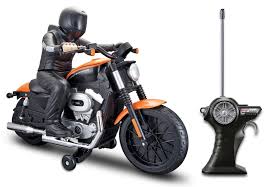
If you’re looking for a simple, affordable model to get started, the Maisto RC Harley Davidson is an excellent choice. It has a user-friendly design, reliable controls, and a stylish look, making it perfect for complete beginners.
- Features: Easy controls, stylish design, lightweight.
- Best For: Entry-level hobbyists.
Basic Operation and Controls
Understanding how to control your RC motorcycle is essential to an enjoyable experience. Here’s a quick rundown:
- Throttle: Controls the speed. Start slow, gradually increasing as you gain control.
- Brake: Use the brake to slow down, especially when approaching turns or obstacles.
- Steering: Managed by the transmitter, with a gyro assisting to maintain balance. Practicing in an open area will help you get accustomed to how the motorcycle handles and responds to commands.
Pro Tip for Beginners: Practice small circles and turns to get a feel for how your bike handles tight maneuvers. Learning to manage turns without tipping will improve your control skills.
Safety Tips for Beginners
To ensure a safe and enjoyable experience, follow these safety guidelines:
- Wear Protective Gear: While not essential for electric models, gloves and eye protection are advisable, especially when riding off-road.
- Practice in Safe, Open Areas: Avoid crowded or obstacle-filled areas. Open parking lots or empty fields are great places to practice.
- Fuel Safety for Nitro Models: If you’re using a nitro model, handle fuel with care. Always operate these models in a ventilated area and follow safety instructions on the fuel canister.

By following these tips, you’ll minimize risks and enjoy a smoother, safer experience with your RC motorcycle.
Maintaining Your RC Motorcycle
Regular maintenance keeps your RC motorcycle in top shape, extending its lifespan and performance. Here are the basics:
- Motor Maintenance: Brushless motors need minimal upkeep, but brushed motors may require occasional cleaning. Use compressed air to remove dust from the motor and gears.
- Battery Care: Avoid draining the battery fully, as this can shorten its life. Recharge it before storing, and use a LiPo-safe bag for LiPo batteries to prevent potential hazards.
- Chassis and Tire Care: Regularly inspect and clean the tires, checking for signs of wear or damage. Tighten any loose screws or bolts on the chassis to ensure stability.
- Grease and Lubricate Moving Parts: Use a silicone-based lubricant on moving parts to reduce wear and friction, especially on off-road motorcycles.
Routine maintenance can keep your RC motorcycle in great condition and save you from unexpected repairs.
Common Beginner Mistakes to Avoid
Here are some common pitfalls beginners often face and how to avoid them:
- Starting Too Fast: Over-speeding can lead to loss of control. Begin at low speeds until you’re comfortable handling the bike.
- Neglecting Maintenance: Failing to maintain your RC motorcycle can lead to performance issues. Regular upkeep is essential, especially after off-road sessions.
- Ignoring Terrain Limitations: Off-road motorcycles can handle rougher surfaces, while on-road bikes are designed for smooth terrain. Using the wrong motorcycle on inappropriate terrain can cause damage and poor performance.
Avoiding these mistakes will help you build confidence and make the most of your RC motorcycle experience.
Advanced Tips for Moving Beyond Beginner Level
Once you’re comfortable with the basics, here are some advanced tips to take your RC motorcycle hobby to the next level:
- Practicing Advanced Maneuvers: Work on figure-eight turns, drift maneuvers, and small jumps to improve control and technique.
- Upgrading Components: Consider upgrading the motor, suspension, or tires to enhance performance. Brushless motors and high-performance tires are popular upgrades.
- Join an RC Club: Many cities have RC clubs where you can connect with other enthusiasts, participate in events, and learn from experienced riders. Racing in friendly competitions can also improve your skills and knowledge.
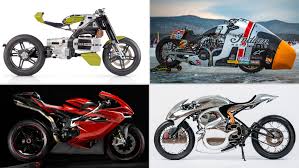
Upgrading your skills and equipment will open new possibilities in the RC motorcycle hobby, making it even more enjoyable
Conclusion
Getting started with RC motorcycles is an exhilarating journey filled with challenges and excitement. This guide provides the foundational knowledge you need to navigate the world of RC motorcycles, from choosing the right model and learning controls to maintaining your motorcycle and avoiding common pitfalls.
RC motorcycles offer a unique blend of skill, speed, and fun. With the right model and dedication, you’ll be riding like a pro in no time. So, gear up, hit the road, and enjoy the thrilling world of RC motorcycles! For more information check my website.
